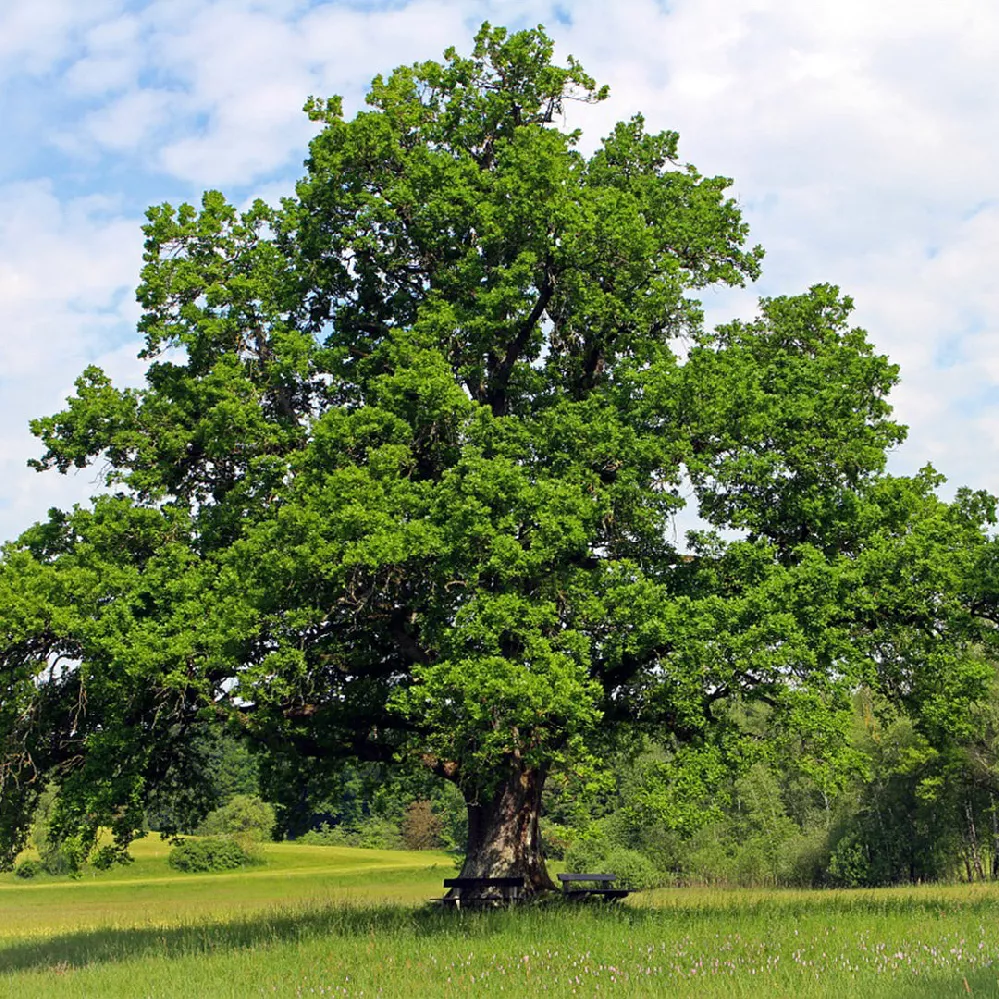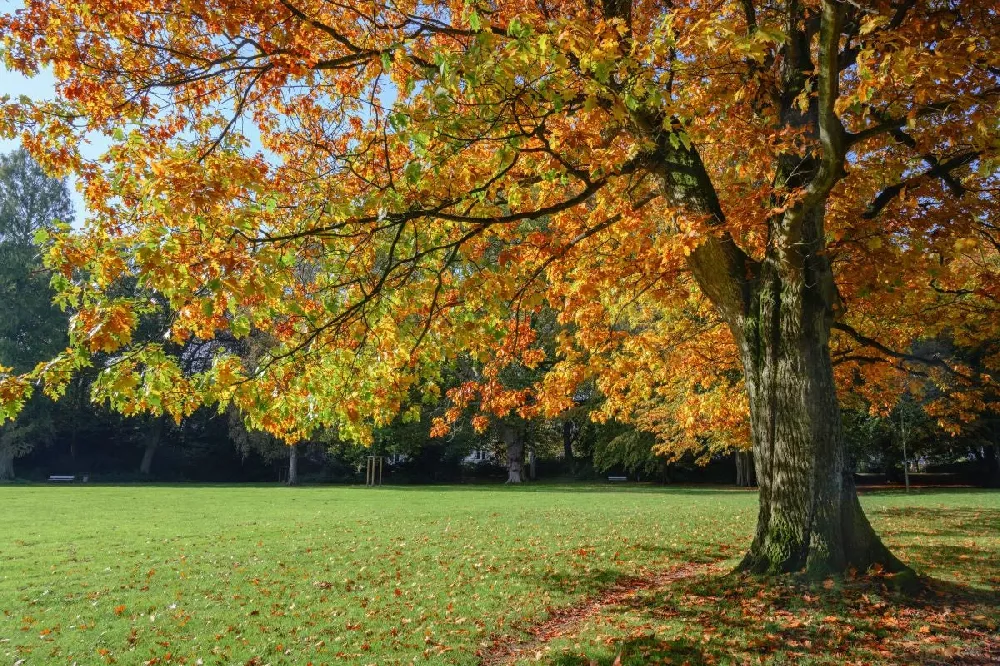- Home >
- Nut Trees >
- White Oak Trees
White Oak Trees for Sale - Buying & Growing Guide
- Ships in 1-2 days
- 1-Year Warranty Eligible
- Pots or accessories are not included unless specified in the product options.
Shipping Details:
Once your order is shipped, you’ll receive an email with a tracking number and estimated delivery date. Most orders ship immediately, but some items are seasonal and may only ship in spring or fall. These products are noted on the website.
The white oak (Quercus alba) is a hardwood tree native to eastern and central North America. Known for their long lifespan, some white oaks have been found to be as old as 450 years. The species features expansive branches and a massive canopy and is recognizable by its textured, light gray bark. Other facts of the white oak include:
- The strong central trunk supports large branches — the tree is often used as a centerpiece in large landscapes like parks and golf courses.
- White oak trees can reach massive heights and spreads, both of which can measure 80 feet.
- Excellent shade tree with underrated fall colors that include shades of red, bronze, and brown.
Plant Care
Sunlight

Full sunlight is best. Partial shade will suffice as well.
Watering
Water once per month for both mature and young trees. No need to water in the cold season.
Fertilizing

Fertilize in early spring with a balanced blend of nutrients.
Planting and Care
Planting instructions
White oak trees prefer a planting site that receives at least four hours of sunlight per day. Given the expansive size of a full-grown white oak, you’ll want to plant in a location with plenty of room between buildings and other trees. When you’ve found the perfect site, dig a hole to the depth of the root ball and twice as wide. Backfill with soil, deeply water the planting site, and cover the area with mulch to retain moisture.
Watering and nutrients
Unlike many other tree species, white oaks need similar amounts of water when they are young and when they are old. Unless you are experiencing a drought, all you’ll need to do is give your white oak water once per month. Mature trees can be fertilized once per year. In the spring, apply a layer of compost or all-purpose fertilizer to speed growth.
Pruning
White oak trees can benefit from regular prunings, especially at a young age. Training the shape of the tree through prunings will ensure a healthy, well-balanced, mature specimen. Take a step back and consider all angles when pruning. Your goal should be to create a full canopy of shade underneath the branches. Perform most pruning during the tree’s winter dormant period. Dead and diseased limbs can be pruned away any time of year, as it encourages healthy growth and prevents the further spread of diseases.
Pests and diseases
One of the most prevalent issues with white oaks is oak wilt, a fungal disease currently spreading through and killing many white oak populations. White oaks are also susceptible to a few other diseases, including white rot and leaf scorch. White rot cannot be treated once it appears on the tree. However, you can remove and burn any affected branches to prohibit the disease from spreading. You can treat bacterial leaf scorch by removing the dieback or relocating the tree. Leafhoppers and other pests are responsible for the spread of this infection. Spray treatments are available to help rid your tree of pests. Whenever possible, opt for a natural bacterial insecticide, as opposed to spraying chemicals on your tree.
FAQs
How large do white oaks grow?
Most white oak trees reach heights of 50 to 80 feet, with some individuals growing over 100 feet. White oaks are known for their expansive canopy, which grows to widths between 30 and 70 feet. White oaks have a slow to medium growth rate — you can expect your tree to grow approximately 12 inches per year. You can influence your tree’s final shape and size through regular prunings. Individuals planted in ideal conditions may live for over 200 years.
How can you identify a white oak?
White oaks are identifiable by their grayish-colored bark, massive size, and spreading growth habits. However, the most notable difference between white oak and other oak species is in the shape of its leaves. White oaks share the same general leaf form, but while other oaks have leaves with sharp, pointed tips, the tips of a white oak leaf are round. A white oak also has a distinct texture to its bark that is flaky and sometimes resembles the texture of an alligator's skin.
Is white oak rare?
Before Europeans came to North America, the Eastern United States was covered in deciduous forests. White oak was one of the most widespread species, more prevalent than other varieties like red oak or chestnut oak. Once settlers arrived, they systematically cleared and harvested many of the native forests of the northeast. While many of those forests have since returned, they remain relatively young in many cases. That means that they consist of faster-growing species and that it will still take some time for the slow-growing white oak to return to its former prominence.
Why are white oaks dying in the wild?
Lately, a large amount of the United States’ remaining white oak population has been dying off. This is due to oak wilt (Ceratocystis fagacearum), a fungal disease that is spreading through Texas and the midwest. The fungus cuts off the tree’s supply of nutrients and water, which causes issues with the foliage and growth, eventually killing the tree. Bark beetles are the main carrier of the oak wilt fungus, spreading the disease as they bore into new trees.
Compare Similar Products
Customer Reviews
 Hopefully!
Hopefully!We planted our tree and hopefully it makes it. It looked pretty sad after we opened the box it was shipped in. Some of the leaves have turned brown.










